Joinerville Texas & Daisy Bradford Discovery Well
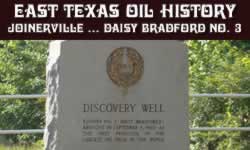 |
The East Texas oil and gas industry dates from the 1930s, and continues to this day to be an important part of the economy and job market of Tyler, as well as Longview, Kilgore, Marshall, Henderson, Gladewater, Van, Jacksonville and other cities and towns.
The oil industry includes a wide perspective of energy-related businesses and occupations, including geophysical operations, exploration, oil drilling, production, oil transportation, natural gas pipelines, refining and allied businesses.
Early History of the Oil & Gas Industry in Texas
The history of oil and gas exploration in Texas is a long one, dating from the first major discovery at Corsicana in 1894. Years later, the Lucas No. 1 well blew at Spindletop near Beaumont in 1901 and the industry took another huge step forward in becoming a dominant feature in the Texas economy and lifestyle.
Columbus Marion Joiner: The Early Years
Read a great new blog post about the oil industry, and the East Texas Oil Museum, at AmericanHistoryRoadTrip.com! Mud, Mayhem, and the Making of Millionaires |
Columbus Joiner was born in 1860 near Center Star in Lauderdale County, Alabama.
He later moved to Tennessee, and at age 23 Joiner established a law practice in Tennessee. He was elected to the Tennessee state legislature, serving until 1891.
He subsequently moved to the Ardmore, Oklahoma area in 1897 in search of inexpensive land, and by 1906 had purchased 12,000 acres of farmland. In 1907, he lost his land during an economic panic. He then sought to reverse his losses in the Oklahoma oil fields as a wildcatter, and drilled the first of about 100 wells in Seminole, Oklahoma in 1913.
In 1926, at the age of 66, Joiner decided to move south, to Texas, believing there was oil in Rusk County, though geologists advised him otherwise. In the summer of 1927, Joiner, now 67 years old, took mineral leases on several thousand acres of Texas land, intending to sell certificates of interest.
The Joiner Daisy Bradford No. 1 and No. 2
Joiner and his, driller Tom M. Jones, spudded the Bradford No. 1 on an 80 acre tract belonging to Daisy Bradford in the Juan Ximines Survey of Rusk County. After drilling for six months with no oil findings, the hole was lost to a stuck pipe, at about 1,098 feet.
Joiner abandoned the well, and then on April 14, 1928, he formed another syndicate from another lease block of 500 acres and sold certificates of interest. This financed his second well, known as the Bradford No. 2, spudded by Joiner and driller Bill Osborne, 100 feet northwest of the No. 1.
Joiner's certificates again were bartered for supplies and labor, openly accepted as a medium of exchange in the poor Rusk County economy. After eleven months of intermittent drilling, the Bradford No. 2 reached a depth of 2,518 feet at which point the drill pipe twisted off and blocked the hole.
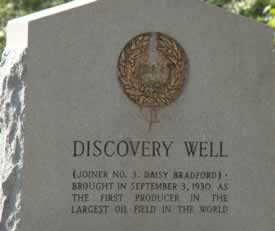 Marker at Joinerville Texas "Discovery Well ... Joiner No. 3 Daisy Bradford brought in September 3, 1930 as the first producer in the largest oil field in the world" |
The Joiner Daisy Bradford No. 3
On May 8, 1929, driller Ed Laster moved the rig to a new location, 375 feet from the second site, and spudded Bradford No. 3.
On September 5, 1930, at a depth of 3,592 feet in the Woodbine sand, the well flowed live oil and gas on a drill stem test.
The initial production was 300 barrels per day; the well was completed on October 5, 1930.
The well is located on CR 4136, on the west side of Miller Lake, and is accessible from Texas Highway 64 to the south ... turn at the Joinerville Post Office. It is also accessible via Highway 323 to the north.
Today, the site has an historical marker (see photo above), and the original well (owned by Hunt Oil), which continues to pump, which is located about 100 feet from the marker off the road.
Daisy Bradford No. 3, still pumping (May, 2011)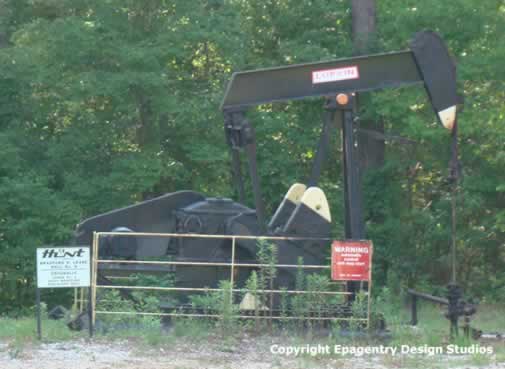 |
Sign by Hunt Oil Company on Daisy Bradford No. 3 (May, 2011)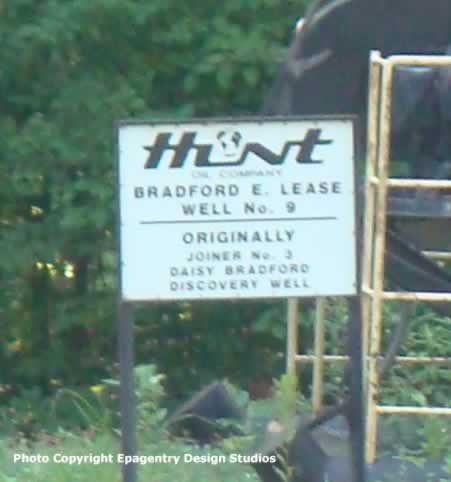 |
Map of Daisy Bradford area
click map for interactive version - courtesy of Google Maps

Subsequent Wells, including the Lou Della Crim No. 1
Following the success of Bradford No. 3, J. Malcolm Crim of Kilgore believed there was more oil to be found in the area. By October 17 he began drilling on land belonging to his mother, Lou Della Crim. The well was a success, on December 28, and was named Lou Della Crim No. 1.
The oil boom was on. The population of Kilgore skyrocketed from 700 to 10,000 in days and proved that the East Texas oil field was a major find. Lou Della Crim No. 1 initially produced 20,000 barrels per day, and was plugged in 1961.
Realization of the Size of the East Texas Oil Field
By early spring of 1931, it became evident that the new wells in the area were not from small, widely-spaced pockets of oil in separate fields, but from one vast field. It was learned that all the new wells were drawing oil from the same Woodbine sands.
This giant East Texas oil field extended into parts of Smith, Upshur, Gregg, Cherokee and Rusk counties, ultimately with 30,340 historic and active oil wells. It's size is roughly 45 miles north-south, and 5 miles wide. It became the largest oil field in the U.S. outside of Alaska at the time.
The rapid proliferation of drilling led to overproduction, and crashing oil prices from $1.10 a barrel in 1930 to 10 cents a barrel in 1931. In August of 1931, Governor Sterling of Texas ordered the National Guard into the field. Later the Legislature created legal prorations to stabilize the market.
The East Texas field became even more important with the advent of World War II, and the construction of the 1,400 mile "Big Inch" pipeline from Texas to Pennsylvania was a key element in keeping the allied troops with an ample supply of oil products.
The discoveries and production of oil have led to the creation of many Texas towns, and to the organization of companies which have become national and international players in the oil industry.
Columbus Marion "Dad" Joiner: The Later Years
Joiner was nicknamed "Dad" because he was the “father” of the giant East Texas oil field, and because of his age, 70 years old. After 1940, Joiner retired in Dallas, and sold his well and leases to Haroldson L. "H.L" Hunt. Joiner died penniless in 1947.
The town which was originally named Cyril, changed its name to Joinerville, in honor of Dad Joiner and his discovery of oil in East Texas.
Oil and Gas Museums and Other Resources
When visiting East Texas, we recommend touring the renown East Texas Oil Museum in Kilgore, and the Gaston Museum in Joinerville, close to the Daisy Bradford No. 3 well. When traveling in West Texas, be sure to see the Permian Basin Museum in Midland.
For more on the history of the oil and gas industry in Texas, we encourage a visit to the Texas Almanac published by the Texas State Historical Association.
More information about the history of oil discovery in nearby Gladewater is also available on this site. Included is information about the Snavely #1, the Gladewater Discovery Oil Well, drilled on April 7, 1931, by Selby Oil and Gas Company
Oil & Gas Photo Gallery of Joinerville and the Daisy Bradford No. 3
Shown below are a few images from Joinerville of East Texas oil and gas history...
Gaston Museum, Joinerville Texas, located on Texas Highway 64
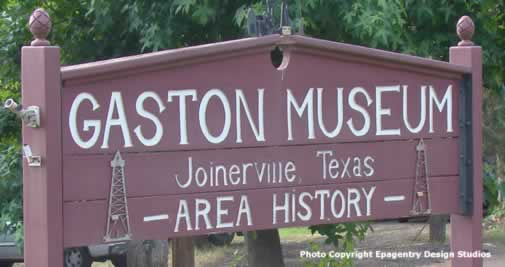
Gaston Museum, Joinerville Texas, west of Henderson
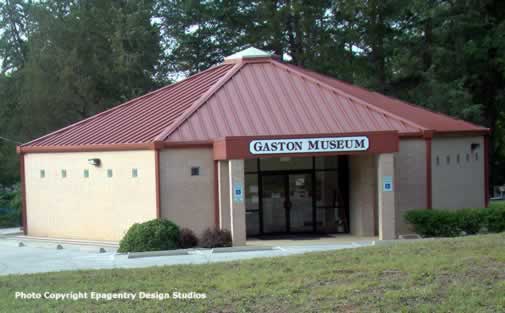
Marker at base of historic oil derrick, Gaston Museum, Joinerville Texas
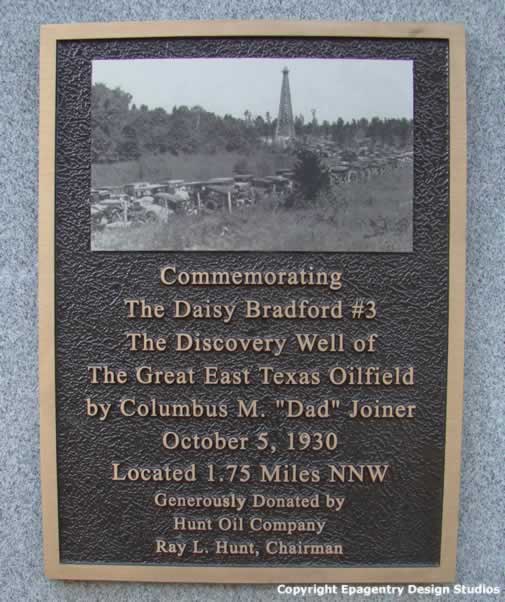
Historic oil derrick at the Gaston Museum, Joinerville Texas
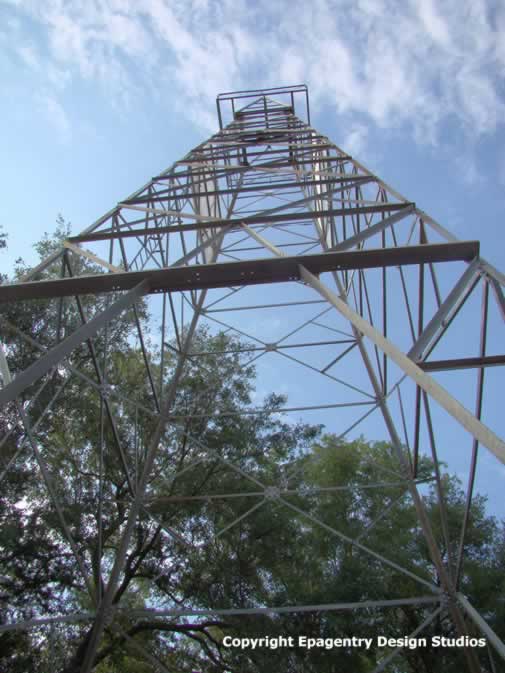
Photos of historical markers and monuments located at "Pioneer Park" between Joinerville and Turnertown,
about 6 miles west of Henderson
| State Historical Survey Committee Marker: The Joiner No. 3 Daisy Bradford click image to enlarge 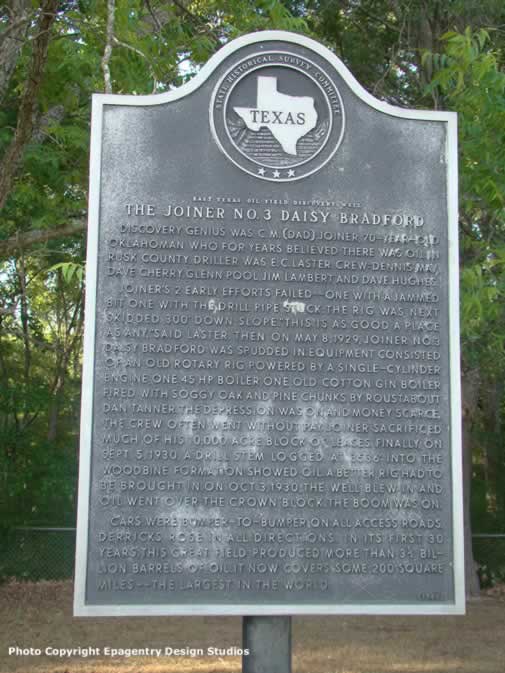 |
Joe Roughneck memorial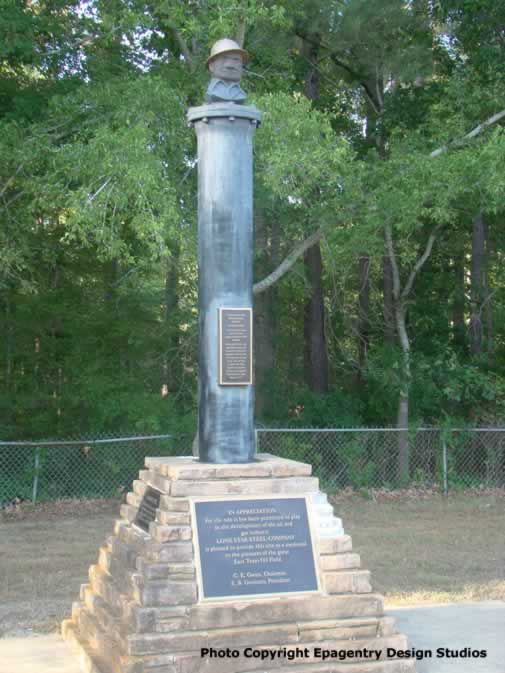 |
Dynamic symbol of the fabulous petroleum industry is Joe Roughneck, whose bust appears above, and who is hereby appointed guardian of this memorial
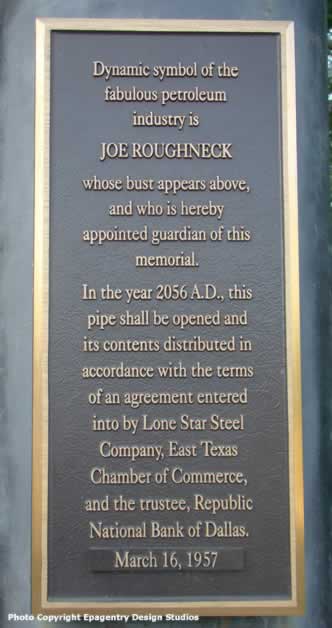 |
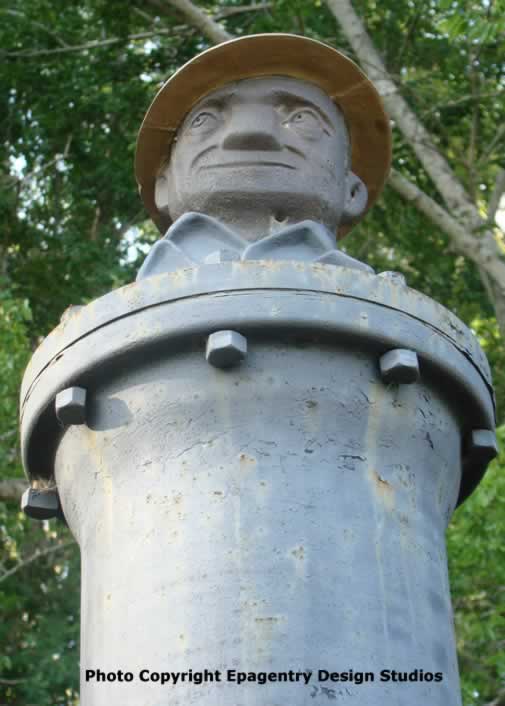 |
Joe Roughneck memorial plaque to the pioneers of the great
East Texas Oil Field
l
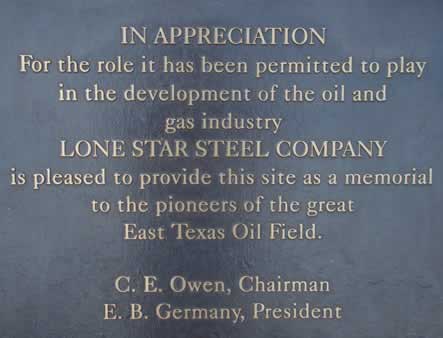
Vintage Views of the East Texas oil industry
Oil field near Tyler, Texas - Historic Postcard
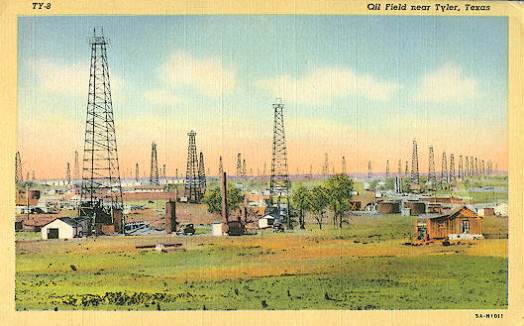
Oil field, Longview, Texas - Historic Postcard
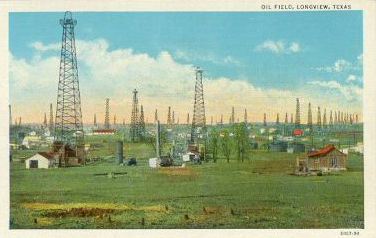
Oil Derricks in Downtown Kilgore, Texas |
East Texas Oil Field - Historic Postcard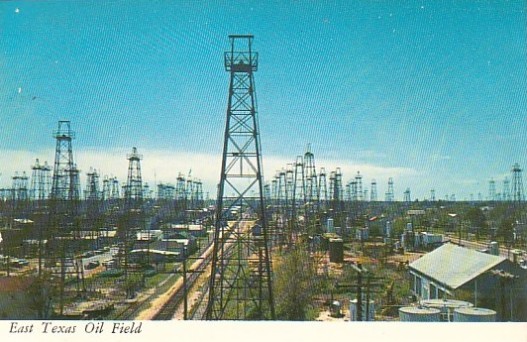 |

